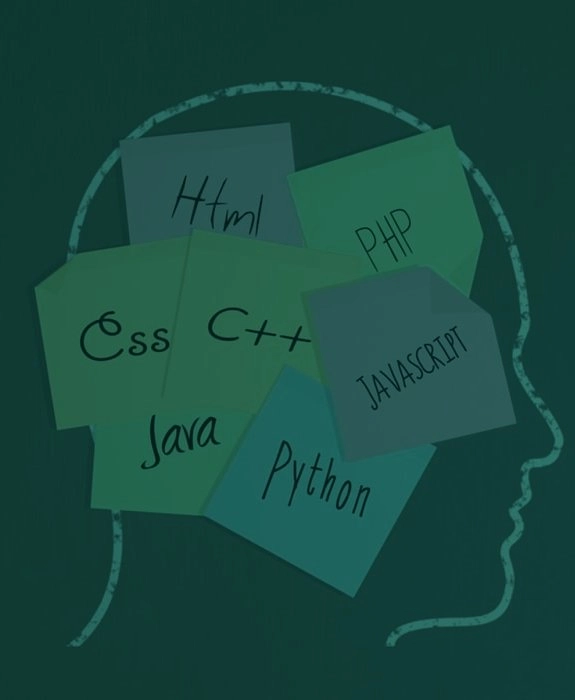Table of Contents
Whenever someone brings up the subject of web development at lunch, all the developers in the lunchroom start throwing about their differing opinions, artfully supported by the ever-changing facts in the industry. So, what is the best backend programming language for web development? It’s quite frustrating to have this debate because choosing a programming language heavily depends on what exactly you’re building. But if you’re a startup trying to figure out what the best language for your product is— specifically for the backend development—then here are a few things to consider:
1. Server frameworks work with programming languages such as Python, Ruby, PHP, or Perl to provide an actual useful server. For Python, Django is a great framework, whereas for Ruby, Rails and Sinatra are commonly used frameworks.
2. Express is also a powerful framework that works with Node.js, a JavaScript runtime that brings JavaScript to the server. In terms of versatility, Node.js is as comprehensive as Python or Ruby.
3. Picking a framework is all down to the kind of product you’re developing. PHP is notoriously problematic for scaling, and Perl is rather outdated in 2019.
What Is Python and Django?
Python is an open-source language that has been embraced by the scientific community and boasts an extensive library for science-related resources. Python is noted for its excellent readability and slight learning curve. However, since Django is a framework intended for a specific way of design and implementation, it can be very opinionated. These limitations may restrict the design and implementation of the ideas you might have for your server. There are a lot of extras that you might want to strip out—for example, Python’s Admin dashboard. Django is great for medium-sized, content-driven websites.
A word of caution: Python can be difficult to scale across multiple cores on a single machine. This is due to limitations caused by the Global Interpreter Lock (GIL). However, it will work well for applications that scale horizontally across stateless servers—perfect for apps that use cloud computing.
What Are Ruby and Rails?
Ruby is a popular interpreted language used for web development; its framework Rails works really well for websites for large-scale enterprises. However, Rails (a lot like Django) requires a specific way of designing your server. With a whole bunch of features, Rails is brilliant—perfect for building products that you intend to scale. It also happens to be the home of SASS—a great CSS alternative. Ruby on Rails (RoR) has a great community with a very large library of resources. Ruby also powers some very popular websites such as Airbnb, Github, and Groupon. So, it’s quite clear that RoR will be your go-to language and framework for web properties with a large number of transactions.
What Is Node.js and Express?
Node.js is an event-driven language born from the belly of JavaScript. The non-block I/O produces high-performance, server-side applications. It is no surprise companies such as Yahoo and LinkedIn have implemented Node.js in their applications. Express is a very minimalistic framework. Its minimalism allows you to code with a kind of elegant simplicity that isn’t possible on other frameworks. One of the highlights of Express is its flexibility: whether you are writing a small mobile API, a blog, a forum, or even a social media networking site, you don’t have to work on the latency or throttling. Unlike Rails and Django, Express is not opinionated and is modular, allowing developers to use popular packages with the Node.js package manager.
At the end of the day, choosing the right language and framework for your web development efforts boils down to finding a match for the design of the product. So, what is the best back programming language? Now that’s a very open-ended question and the answer is not simple. The only way—and it’s the hard way—to pick the right language for a particular web development is through the confluence of three factors: the right expertise, the right manpower, and the right product design. If you are looking for a custom software development company or a web application development service to help your business with your next project please contact us today for a free consultation.
Stay ahead of the game with our helpful resources

4 digital solutions to address common application performance issues
High network latency, memory leaks, slow page loads, heavy CPU usage, and unresponsive servers are all typical performance issues we’ve experienced at some point when using or accessing digital applications. With how easy they occur in projects across verticals, you might be wondering whether the development teams behind these programs have done enough due diligence prior to the release. But human errors and oversight aren’t always the culprit. The reality is that while developers can strive to develop a fully functioning program with virtually no apparent faults upon delivery, no software is truly error-free. Even the most rigorously tested applications

6 useful tips for creating more robust application lifecycle management
As digital technology becomes the norm, software acquisition is now key to gaining a competitive edge in today’s market. Be it as a value offering tailored to consumers or a productivity tool to run complex processes, custom software undeniably helps companies drive growth and deliver value more efficiently. Just as necessary as having a proprietary application is prescribing a standard procedure to govern and maintain its utility. This is to ensure that your business can develop or adopt the right type of software—one that can fully cater to your business needs while keeping disruption to a minimum across critical milestones.

5 major roadblocks businesses must overcome when transitioning into a new software environment
As the business landscape becomes increasingly saturated, staying ahead of the curve often means embracing disruptive technologies to meet the fickle market demands. In most cases, this entails knowing when to pivot your current strategy to an entirely new solution. But recognizing the importance of digital shift is one thing; implementing the necessary IT upgrade is another. A global survey by Deloitte has found that although 87% of companies manage to identify the impact of digital trends on their industries, only 44% have adequately prepared for the coming disruptions. This vast disconnect between organizational expectations and conditions in the field

Is cloud computing the answer to better software development?
Cloud computing is perhaps not a term often heard in daily conversations, but it is one with a far-reaching impact on our technological needs. From expansive options of online data storage to numerous suites of web-based productivity tools like Google Workspace, nearly everyone has used a cloud-enabled technology. Over the last decade, this high degree of versatility also underpins the rapid cloud uptake among businesses. In fact, one survey has found that 94% of companies have already shifted their computing workloads on cloud platforms to varying extents. Unsurprisingly, the market size for cloud technology continues to grow exponentially. With a



